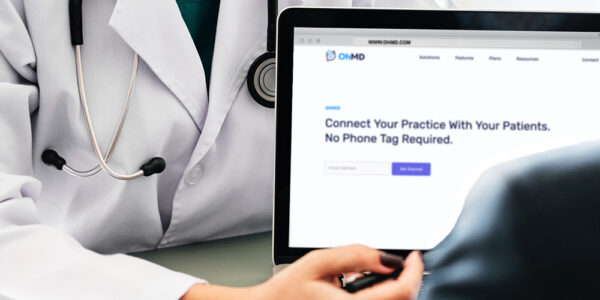Ensuring positive patient experiences and the highest quality of patient health outcomes requires more than just making diagnoses and performing surgery. Efficient communication plays an integral role in all steps of the healthcare process. Providers must be well-practiced in sharing information with colleagues and having transparent conversations with patients to achieve the best results.
Organizations with strong communication policies often improve patient health outcomes and experience, while those that do not can negatively impact their patients’ health. To ensure operational efficiency, healthcare professionals and institutions need to recognize the importance of communication in healthcare.
Benefits of improved communication in healthcare
According to a study by CRICO, poor communication resulted in 1,744 deaths and $1.7 billion in hospital costs between 2009 and 2013. In addition, 37% of all high-severity injury cases included communication failures. As bad as that sounds, these statistics only scratch the surface, according to researchers. There are likely countless communication-related patient harms that did not lead to malpractice claims.
Effective communication, both inter-hospital and intra-hospital, is important for several reasons. Not only does it protect patients’ lives, but it also saves the hospital from additional expenses and increases the daily operating efficiency. Clear communication with the patient will improve their experience, in addition to ensuring the proper execution of treatment plans.
Types of communication in healthcare
Inter-hospital
Inter-hospital communications involve the sharing of information between multiple locations or organizations. Separate facilities may be owned by the same organization or completely separate entities altogether. The transfer of patients, health records, and medical equipment are all subject to inter-hospital communication error.
Unfortunately, hospitals often encounter obstacles in communicating effectively with each another. Poor communication increases costs when organizations complete duplicate tests and get second opinions that would not otherwise be necessary. Additionally, patients’ health outcomes can suffer when hospitals do not efficiently share medical equipment or health information.
Intra-hospital
Intra-hospital communication errors occur among colleagues within the same organization. Lapses in coordinating room changes, scheduling surgeries, assigning follow-up tests, or even setting up appointments are all considered intra-hospital communication errors.
When providers, staff, and patients do not effectively share information, the efficiency of each process may decrease. Such inefficiencies may result in unnecessary costs, patient record delays, or even serious medical problems.
Methods
New data highlights the significant drawbacks of using email as the primary form of communication in healthcare. In 2018, the average email open rate was less than 25%. While already low, this number does not account for undelivered emails that also result in miscommunications with patients. If you want to feel confident that your patient saw and read your message, email is not the way to go.
Phone Call
Phone calls, while better than email, are still not the most efficient medium for communicating with your patients. Not only do phone calls take 10 times longer than sending a text, but they also have a successful contact rate of 30 to 60 percent in the healthcare industry. When compared with the 97% – 99% successful contact rate of text messages, the optimal form of healthcare communication becomes clear.
Text Message
Today, text messaging is the most desirable method of communicating in healthcare. Health systems can feel confident their important messages are delivered and read within minutes. Moreover, front office staff can spend less time trying to contact patients and more time on the things that matter.
How can I improve communication in my practice?
Implementing a HIPAA compliant texting service into your practice is the quickest and safest way to improve communication in healthcare. Through a service like OhMD, you can send notifications, messages, and files to patients and colleagues with the tap of a finger. Hear back from your patients instantly through text without worrying about compliance issues and unnecessary fines. Improve your bottom line with increased payment collection and fewer no-shows. Perhaps most important, reduce devastating miscommunications and save more lives.
To learn more about implementing OhMD into your practice, schedule a demo today!




